|
History (GS-I)
Rang ghar
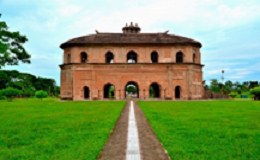
|
A laser show as part of the celebration of Prime Minister Narendra Modi’s 100th Man Ki Baat episode at the Ahom era amphitheatre Rang Ghar in Assam’s Sivasagar district has drawn criticism after “religious symbols” were shown in projections.
About Rang ghar
- Rang ghar is known as first Ampitheatre or first Pavilion of Asia.
- Built by: Swargadeo Promotta Singha in the year 1744 A.D.
- Its shape is octagonal at base. The building has two storeys.
- At the roof of the structure is shaped like an inverted royal Ahom long boat where there are the projecting heads of two small MAKARAS or JALAHASTIS facing reverse towards north and south.
- The Rang Ghar was built specially for enjoyment of recreational/sports activities by the royal families and public of the Ahom dynasty.
|
Sukhrungphaa also known as Swargadeo Rudra Singha, (c. 1665- 27 August 1714) was a Tungkhungia Ahom king and 30th king of the Ahom kingdom who reigned from 1696 to 1714.
|
|
|
Geography (GS-I)
World’s second deepest blue hole discovered in Mexico
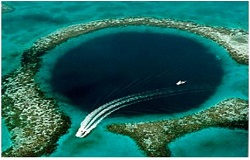
|
As per the latest development, scientists have uncovered a massive sinkhole off the coast of the Yucatan Peninsula in Mexico.
About
- The giant blue hole which is around 900 ft deep, has been dubbed as the second deepest blue hole found on the planet.
- The world’s deepest known deep hole was discovered in the South China Sea in 2016, and is known as the Dragon Hole.
- As per the records, it’s more than 980 ft deep.
- The Mexico blue hole has been named ‘Taam Ja’, which means ‘deep water’ in Mayan.
|
A blue hole is actually a massive underwater sinkhole, which is hundreds of metres long and spans across areas that are bigger than cities and stands at a height of several skyscrapers.
|
|
|
Geography (GS-I)
Rare Sun Halo

|
In a rare celestial event, a mysterious ring was seen around the Sun in the skies in some parts of Uttar Pradesh (UP), India.
About Sun Halo
- A sun halo is an optical phenomenon that occurs when sunlight interacts with ice crystals in the atmosphere.
- It appears as a bright ring or halo around the sun, typically with a radius of approximately 22 degrees.
- The ring is formed by unique hexagonal ice crystals present in the atmosphere.
- These icy crystals are found in cirrus clouds, which are thin and wispy clouds.
- When sunlight enters these ice crystals, it is refracted, or bent, by the crystal's surfaces.
- This bending of light causes the sun's rays to separate into their component colors, creating a spectrum of colors that are visible as the halo.
|
|
Polity & Governance
Wayanad tops Swachh Bharat Mission’s ODF Plus rankings
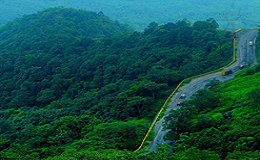
|
Wayanad, Kerala has become the first district in the country to be declared ODF (open defecation-free) Plus.
ODF+ and ODF++
- India has been running the Swachh Bharat Mission 2.0 scheme, an extension of the first phase launched in 2014, since February 2020.
- ODF+ and ODF++ are aimed at proper maintenance of toilet facilities and safe collection, conveyance, treatment, or disposal of faecal sludge and sewage.
- ODF+ focuses on toilets with water, maintenance and hygiene
- ODF++ focuses on toilets with sludge and septage management
|
Other important Schemes
- GOBARdhan Scheme: The scheme aims to support villages in safely managing their cattle waste, agriculture waste and organic waste.
- Jal Jeevan mission: It a program that seeks to connect all rural households with clean tap water by 2024, has been in force since August 15, 2019.
|
|
|
Polity & Governance
Millets Experience Centre

|
National Agricultural Cooperative Marketing Federation of India in collaboration with the Ministry of Agriculture and Farmers Welfare (MoA&FW) established the Millets Experience Centre with an aim to raise awareness on Millets and encourage their adoption among the general public.
About MEC
- The setting up of the MEC is a step in becoming a ‘Global Hub’ for Millets.
- The ministry-led initiative of establishing a consumer-oriented ‘Millets Experience Centre’ would not only promote the dietary benefits of the ancient grain but also popularize millets or Shree Anna as a nutritional powerhouse.
|
International Year of Millets (IYM 2023)
- Acting upon India’s proposal supported by 72 countries, the United Nations General Assembly declared the year 2023 as the International Year of Millets (IYM 2023).
- The declaration positioned India at the forefront of the celebrations and the Government of India has been working on ‘mission mode’ to champion millets as a crop good for farmers, the environment, and consumers.
|
|
|
Polity & Governance (GS-II)
Fabry Disease
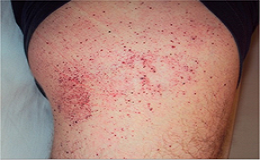
|
Despite the availability of financial support for treatment of all rare disease patients, none of the six patients with Fabry Disease, have been given the treatment.
About Fabry disease
- Fabry Disease is a rare yet treatable disease.
- April was observed as Fabry Disease Awareness Month.
- The diseaseis a rare disease classified under the National Policy for Rare Diseases 2021.
- It is caused by enzyme deficiencies, affecting the functioning of the heart and kidneys.
|
|
Economy
ADB announces IF-CAP

|
The Asian Development Bank (ADB) announced the Innovative Finance Facility for Climate in Asia and the Pacific (IF-CAP).
About IF-CAP
- It is a landmark programme which could significantly ramp up support for the region in the battle against climate change.
- IF-CAP's initial partners are Denmark, Japan, the Republic of Korea, Sweden, the United Kingdom, and the United States.
- IF-CAP financing will contribute to ADB’s ambition for $100 billion from its resources for combating climate change for 2019–2030.
|
Asian Development Bank (ADB)
- ADB is committed to achieving inclusive, resilient, and sustainable Asia and the Pacific, while sustaining its efforts to eradicate extreme poverty.
- Established in 1966, it is owned by 68 members—49 from the region.
|
|
|
Science & Technology (GS-III)
StarBerrySense

|
The Indian Space Research Organization (ISRO) launched a low-cost star sensor called StarBerrySense on board its Polar Satellite Launch Vehicle (PSLV) C-55 rocket recently.
About
- Developed by: Indian Institute of Astrophysics (IIA).
- Objective: StarBerrySense’s primary objective is to image the field of view, identify stars, and calculate the spacecraft’s pointing direction.
- The StarBerrySense sensor calculates the pointing direction by identifying the stars in its field of view.
- The sensor captures images of the stars and uses them to determine the spacecraft’s attitude and orientation.
- This information is crucial for controlling the spacecraft’s movement and keeping it on the right path.
|
|
Science & Technology
INS Tarkash deployed for Operation Kaveri

|
India has deployed its third warship INS Tarkash under the ongoing Operation Kaveri to evacuate all the Indians stuck in war ravaged Sudan.
About INS Tarkash
- INS Tarkash is a state-of-the-art stealth frigate of the Indian Navy equipped with a versatile range of weapons.
- It has a weapon-sensor fit that enables her address threats in all dimensions.
- The ship is part of the Indian Navy’s Western Fleet.
|
|
Science & Technology
Karnataka ranks as the most ‘innovative’ State: NMIS

|
A survey on the degree of innovation among manufacturing firms found that Karnataka, overall, is the most “innovative” State, followed by Dadra and Nagar Haveli, Daman and Diu (DNH&DD), Telangana, and Tamil Nadu.
Key-highlights
- Highest and lowest share: Telangana, Karnataka, and Tamil Nadu had the highest share of innovative firms at 46.18%, 39.10% and 31.90%, respectively, with Odisha, Bihar, and Jharkhand reporting the lowest share of such firms at 12.78%, 13.47% and 13.71%, respectively.
- No innovation: Nearly three-fourth of the 8,000-odd firms surveyed, most of them micro, small, and medium enterprises (MSME), neither made any innovative product nor business process innovation during the survey period of financial years 2017-2020.
|
The findings are part of the National Manufacturing Innovation Survey (NMIS) 2021-22, a joint study by the Department of Science and Technology (DST) and the United Nations Industrial Development Organization (UNIDO), to evaluate the innovation performance of manufacturing firms in the India.
|
|
|
Environment
International Leopard Day

|
May 3 is observed as the International Leopard Day to make people aware of the nocturnal big cat.
About
-
The leopard (Panthera pardus) is one of the five extant species in the genus Panthera, a member of the cat family, Felidae.
-
The leopard is distinguished by its well-camouflaged fur, opportunistic hunting behavior, broad diet, strength, and its ability to adapt to a variety of habitats ranging from rainforest to steppe, including arid and montane areas.
- IUCN Red List: Vulnerable
- Distribution: Asia, sub-Saharan Africa, Southern Russia, and the Indian subcontinent.
- It can run at speeds of up to 58 km/h (36 mph).
|
|
Environment (GS-III)
Painted storks nesting in two A.P. villages

|
One of the largest flock of painted storks, approximately 4,000 birds, have made tall trees in Veepapuram and Venkatapuram villages in Chilamathur mandal of Sri Sathya Sai district their breeding ground.
- Scientific name: Mycteria leucocephala
- The painted stork belongs to the family,
- The painted stork is a large wading bird of stork family.
- Distribution: They are found in Pakistan, India, Sri Lanka, Myanmar, Malaysia, Thailand and Vietnam.
- Breeding:They mostly inhabit wetlands in the plains breed closer to undisturbed/protected trees
- IUCN Status: International Union for Conservation of Nature (IUCN) had categorized and evaluated these stork species and had listed them as 'Near Threatened'.
-
|
Kokrebellur village in Mandya district of Karnataka is the largest breeding ground for these birds.
|
|
|
Environment
Scientists discover new Seamounts
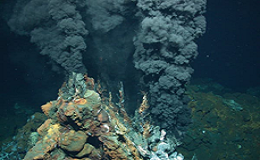
|
In an astonishing discovery, scientists have reported finding 19,325 new seamounts after poring through new high-resolution data.
About Seamount
-
A seamount is an underwater mountain.
-
They are formed through volcanic activity and scientists recognise them as hotspots for marine life.
-
Like volcanoes on land, seamounts can be active, extinct or dormant volcanoes.
-
Most seamounts are formed near mid-ocean ridges, where the earth’s tectonic plates are moving apart, allowing molten rock to rise to the seafloor.
-
The planet’s two most-studied mid-ocean ridges are the Mid-Atlantic Ridge and the East Pacific Rise.
Some seamounts have also been found near intraplate hotspots – regions of heavy volcanic activity within a plate – and oceanic island chains with volcanic and seismic activity called island arcs.
|
|
Environment
India to join international climate action in civil aviation from 2027

|
India will start participating in the International Civil Aviation Organisation's (ICAO) Carbon Offsetting and Reduction Scheme for International Aviation (CORSIA) and the Long-Term Aspirational Goals (LTAG) from 2027.
About CORSIA
- The Carbon Offsetting and Reduction Scheme for International Aviation (CORSIA) is a global scheme to address emissions from international air travel.
- Agreed on in 2016 by the International Civil Aviation Organization (ICAO), it obliges airlines to monitor and report their emissions from 2019 and to purchase emission reduction units generated by projects in other sectors, to cover any growth in CO2 emissions above 2020 levels from 2021.
- CORSIA is implemented in three phases:
- a pilot phase (2021-2023)
- a first phase (2024-2026)
- a second phase (2027-2035)
- For the first two phases (2021-2026), participation is voluntary.
- As of 1 January 2023, 115 States had announced their intention to participate in CORSIA.
|


















